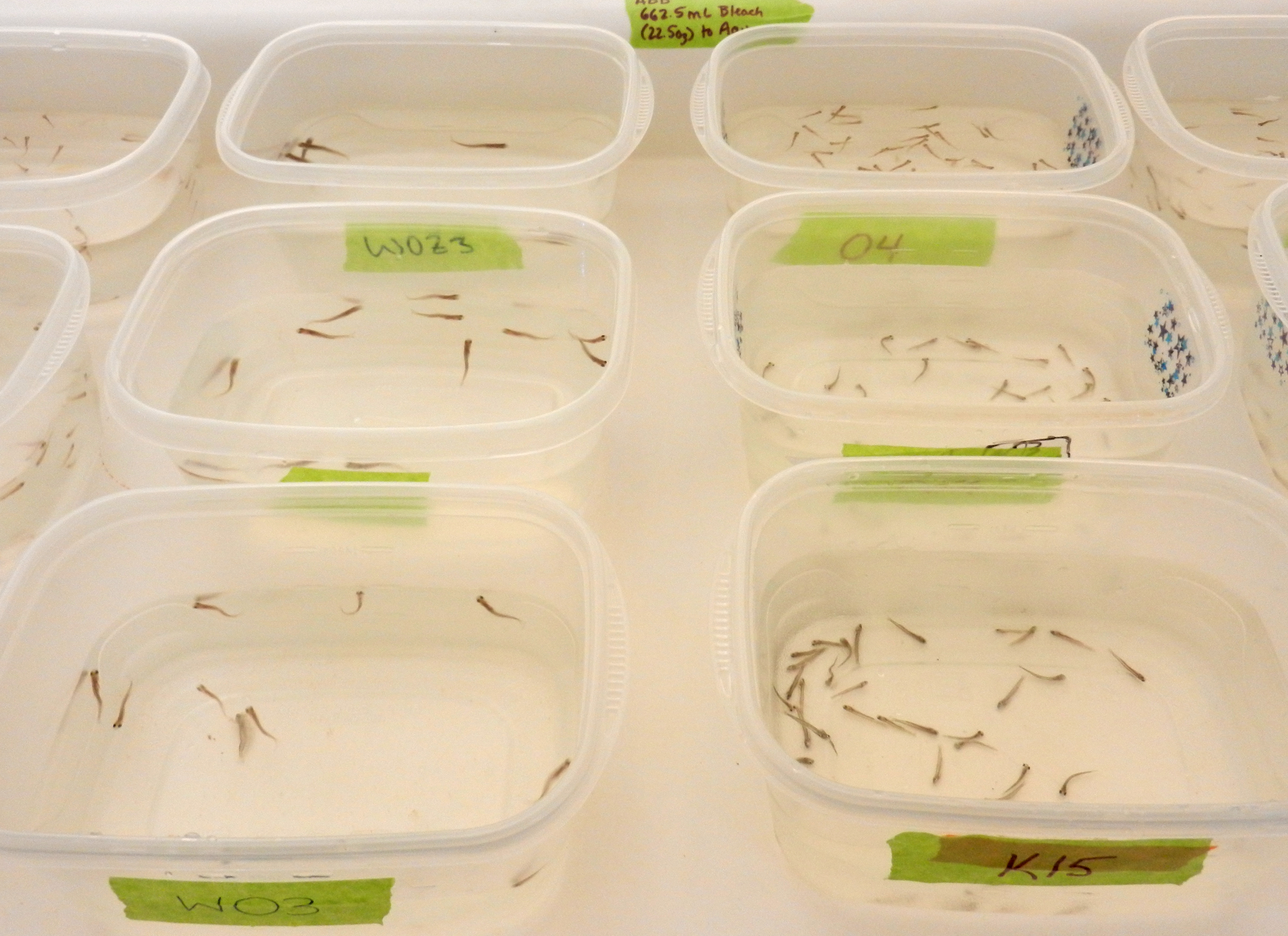North Slope ‘fish spa’ might hold answers to survival in a warming Arctic
TOOLIK LAKE — A North Slope “fish spa” might hold answers to how arctic grayling will react in a changing climate.
The lab at Toolik Field Station, one of only two long-term Arctic research facilities in the world, hosts little arctic grayling in custom-made pools warmed to precise temperatures by spa heaters. As the Arctic warms faster than any other place in the world, scientists hope to determine if certain populations of arctic grayling will react better to warming waters.
The project is led by Linda Deegan, a senior scientist at Woods Hole Research Center in Massachusetts, and Mark Urban, associate professor at the University of Connecticut. This is the final year of its three-year grant, although the researchers are writing an extension to the National Science Foundation.

The researchers first looked at three locations close to Toolik Field Station and found that each contained a genetically distinct population of arctic grayling. This was in itself a surprise, especially because in one watershed — Oksrukuyik Creek — grayling differed genetically depending on whether the fish were captured upstream or downstream.
“In general, people expected that you might see one population per one large watershed,” Urban said in a phone call. “Finding that there are differences even within a watershed has been really exciting.”
Now, the question remains: Do these genetic differences translate into different traits for the fish?
“That’s what’s going to key us into whether one population or another might do better in climate change conditions or not,” Heidi Golden, a postdoctoral research associate at the University of Connecticut working with Deegan and Urban, said at Toolik Field Station in early August.
Golden and two other researchers were busy cleaning one of the large, square containers that hold plastic storage bins filled with temperature-controlled water and tiny grayling. Each fish consisted of no more than two round eyes on top of an inch-long tail.
The setup is repeated twice in the lab — the “fish spa,” as the researchers nicknamed it — with each container representing a different temperature.
The first container, at 46 degrees, represents the summer average of the nearby Kuparuk River, while another, at 54 degrees, represents the summer average of the Oksrukuyik Creek. The third container is set at 61 degrees — an expected temperature for climate change.
According to Golden, the upper Oksrukuyik region already reaches 61 degrees in the summer.

“So it’s not a pie-in-the-sky number” for warming, she said.
All of the fish were either raised from eggs in the lab or caught in the wild as soon as they hatched. This type of “common garden” experiment guarantees that the traits observed in the fish — and their survival in the tanks — can be attributed to genetics, not the environments they were raised in.
[Arctic Alaska lakes get artificial warmth in effort to simulate climate change]
So far, the team has observed that the warmest tank had the fastest hatching and developmental rates. But it also had the highest mortality rate.
“So, even though those conditions may be really great for growing fish fast and big, you’re not going to have as many survive,” Golden said.
In another lab across from the “fish spa,” Deegan was testing a small respiration chamber that will measure the oxygen each fish consumes, a good indicator of their adaptation and response to temperature changes.
“We have lots of evidence in other literature that there is some ability of organisms to adapt,” Deegan said. “Our question is, how flexible is this species right now?”

Other tests will include letting the fish “free” in a white box with several different lanes, or flumes, running lengthwise and split in the middle. One end will be warm and the other, cool. The researchers will observe which side they gravitate toward: Will a fish containing genes from grayling associated with a cold watershed — but raised in a warm pool — prefer warm water or cold? If the latter, it suggests that the fish population has adapted to that local climate.
The grayling’s ability to respond to temperature and other environmental changes is important, as it is “the quintessential Arctic fish,” Deegan said. The Alaska Department of Fish and Game calls it “Alaska’s premier freshwater fish” that attracts sport fishermen from all over the world.
Beyond the economic contribution of Alaska’s arctic grayling, some villages rely on the fish as part of a subsistence diet. Studies have also shown that arctic grayling are an important food for lake trout.
“You can get much larger lake trout” in lakes with both arctic grayling and trout, Deegan said. “The grayling tends to be fished for by fly fisherman, but everybody fishes for lake trout.”